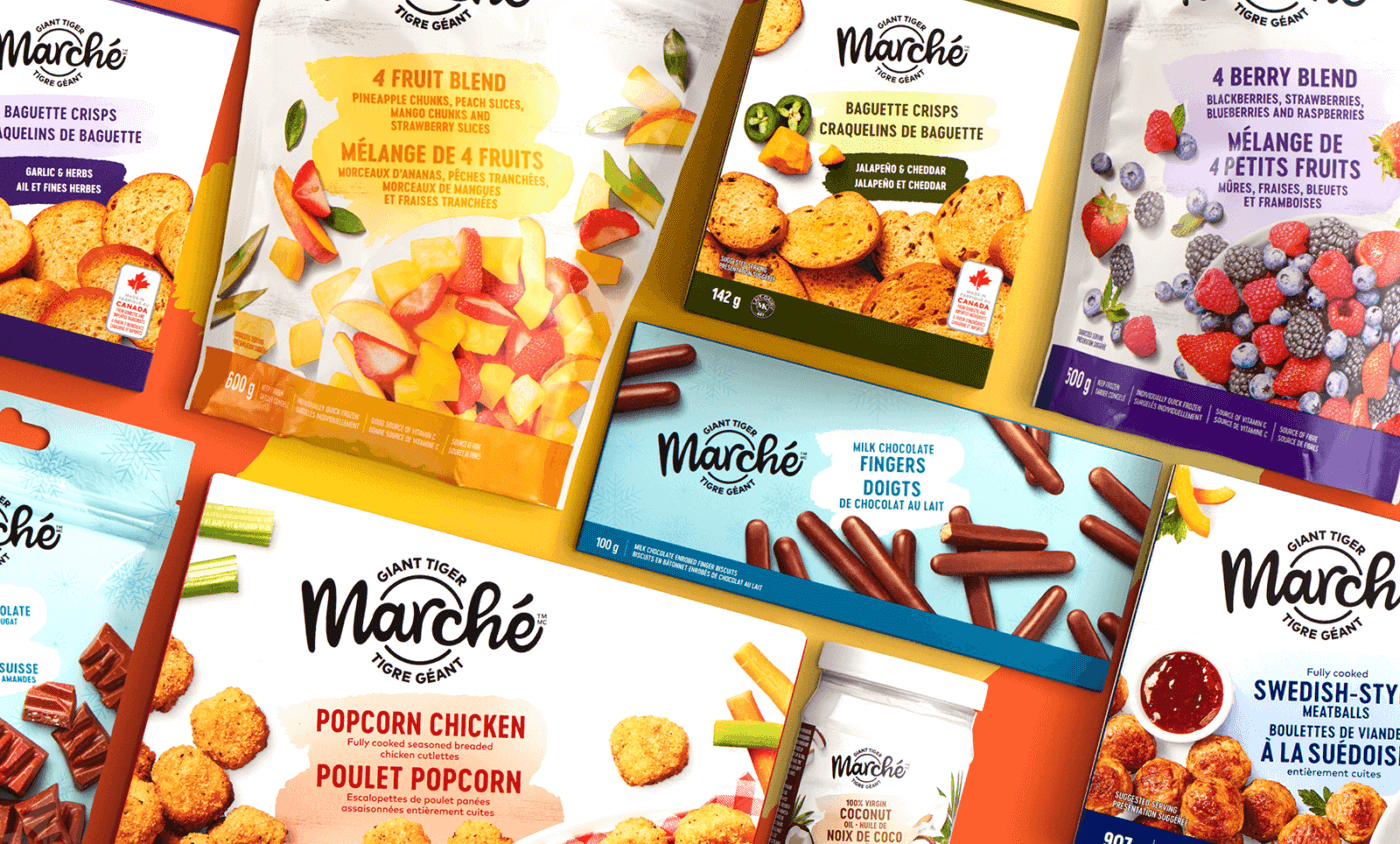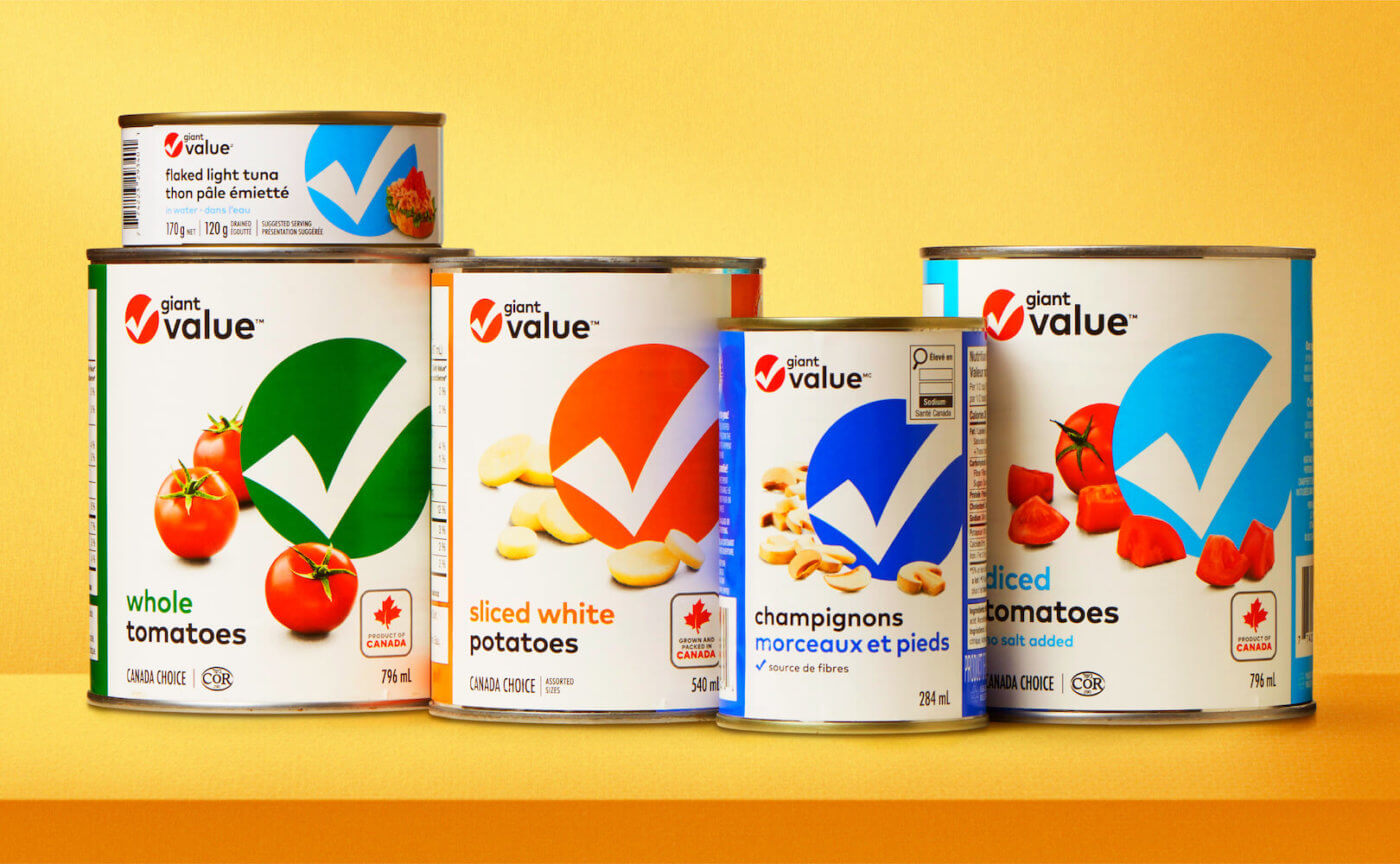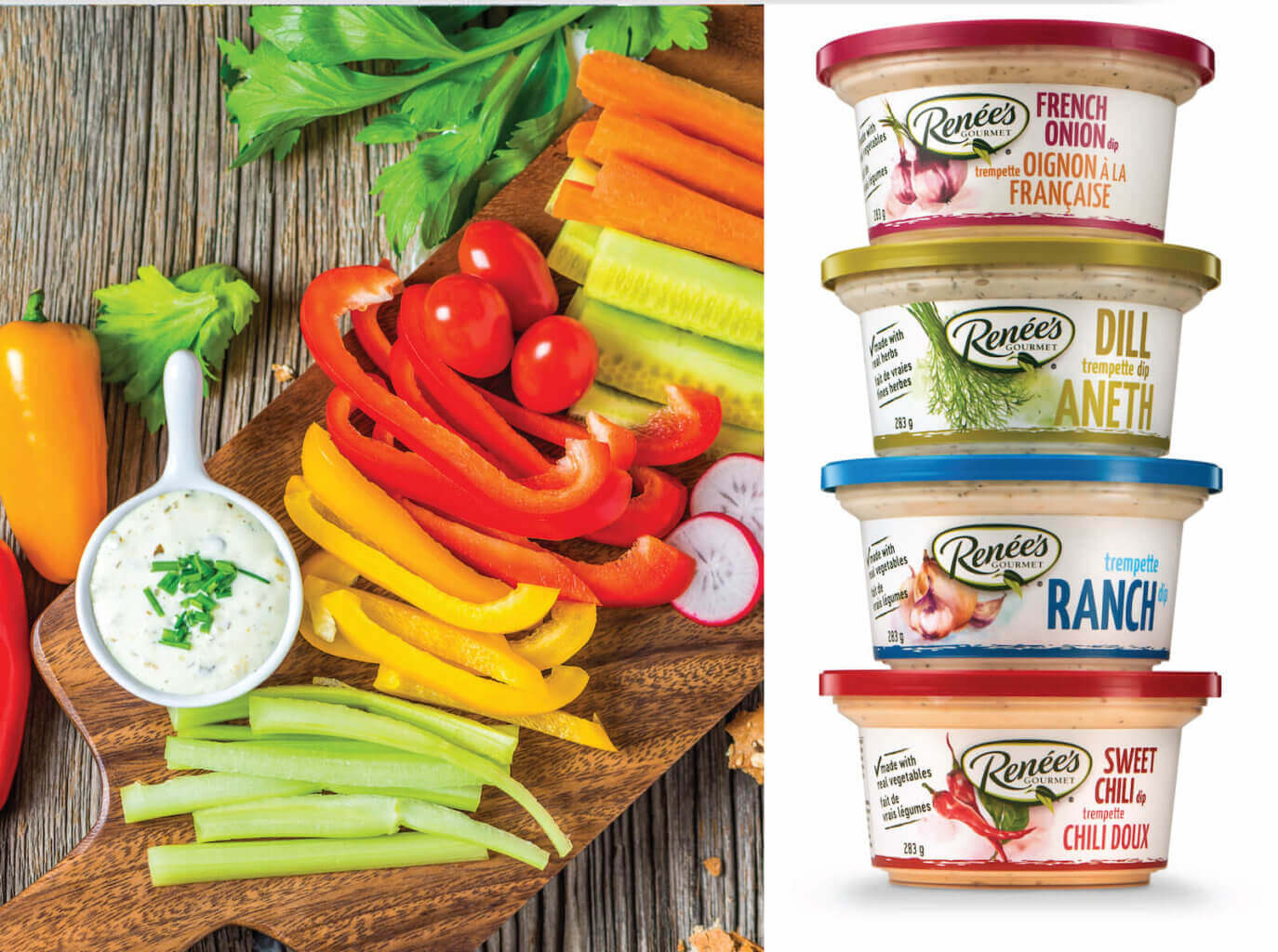In an uncertain economy, grocery stores have a unique opportunity to win over customers through pricing as food costs continue to rise. With the rapid expansion of private label brands across North America, grocers have been able to introduce excellent private label offerings that deliver both selection and value. With this rise, how can grocery brands up their packaging game to take advantage? This blog will explore how grocers can strengthen their private-label brands and give consumers exactly what they’re looking for on the shelf.
Setting The Scene: The Grocery Sector
It can’t be understated just how much food prices have hurt the consumer, with the average cost of food rising by nearly 26% in the last 5 years in Canada and 5.8% in 2023 in the USA. In June of 2024, many consumers decided to boycott major Canadian grocery chain Loblaws in protest of their pricing. The consumer concern doesn’t stop at grocery chains as shrinkflation has started to become increasingly obvious to consumers.
2023 saw the rise of value brands, and this is just the beginning. In Canada, brands like Maxi, NoFrills, and Food Basics entered the top 40 brands as consumers tried to find value when shopping for groceries. More than ever, Canadians are turning to value brands such as Dollarama and dollar stores, with the latter being one of the top rising brands of 2023. Additionally, the Canadian government is seeking to attract more value grocers like Aldi and Lidl to try and win over consumers with increased competition and lower pricing.
The Solution: Segmenting Using Effective Private Label Architecture
Many already have private label programs in place, with the market in the United States growing by approximately 60 billion USD over the last 5 years. The right way to capitalize on the current market uncertainty is to revisit the private label portfolio-architecture to ensure clear positions for each brand and capture market share in as many segments as make sense for your brand. With 68% of consumers choosing private label brands based on price and 67% choosing based on a feeling of good value, there’s good reason to invest in a product line based solely on providing value for the customer. Here are some strategies retailers can use to capitalize on the rise of value-based grocery shopping.
Segment Your Private Label Brands
Separating your private label brands into a value-based and premium-based lineup can differentiate your products and emphasize different aspects for targeted consumers. Think Great Value and World’s Finest for Walmart, No Name, President’s Choice, and PC Black Label for Loblaws, and Giant Value and Marché for Giant Tiger. These private label brands differentiate through branding, clearly communicating a sense of value for the consumer, a premium offering, or even somewhere in between as a National Brand Equivalent (NBE).
Take the example of Giant Value and Marché for Giant Tiger. Giant Value is a value brand and communicates this through its packaging, while Marché is a national brand equivalent and uses packaging design to reflect that customers would pay a bit more for the product.


Image Source: SLD
Ensure A Strong Branding Hierarchy
Value isn’t just communicated through price. Strong visual elements, like Giant Value‘s redesign, support a value message. The design stretched across almost 100 SKU’s, all with a similar hierarchy. This created a standout presence on the shelf, along with clear communication on what the product offered. The giant “checkmark” that was included on every pack solidified the product line under the Giant Tiger branding and visually communicated the value that customers can expect when coming across the product on the shelves.
Loblaws has even introduced a third tier with their PC Black Label, drawing inspiration and ingredients from around the world. Their design reflects that the product demands a premium. The black packaging showcases the “elegance” of the product, while black and white imagery emphasizes the premium feel. Contrast this with a value brand such as Giant Value, and we see that the design is strikingly simple, but retains The Blink Factor through its brightly colored check mark and strong, close-cropped product imagery on a white background.
Typeface makes a difference too, and this can be seen in the styling of Giant Value and Marché. To convey value, a sans serif lower case font was used with bright coloring to pop against the white background, whereas Marché utilizes a handwritten, stylized font with a mix of upper and lower case against a wider range of colors. While the difference is subtle, the visual cues are instantly recognizable to customers, making it incredibly effective.


Image Source: SLD
Invest In High-Quality Packaging Design
When shoppers can’t decide between your private label and a national brand, how do you provide the deciding factor that makes them choose your brand? Often, what it comes down to is the packaging and what the packaging communicates to the consumer. A good question to ask yourself is – does your brand have the Blink Factor?
The Blink Factor is the instantaneous emotional connection customers make with your product, in the blink of an eye. Customers decide subconsciously if they want to purchase your product. This is why creating a lasting impact with your packaging design is so important. If you were to walk down a crowded aisle, would your brand be the first thing you’d see? If the answer is no, there’s a good chance your customers feel the same way.


Image Source: SLD
Conclusion
Eye-catching and informative packaging can make a significant difference in a consumer’s purchasing decision, especially in a crowded marketplace. Ensuring that private label products clearly communicate their value proposition will attract more customers and build loyalty. By adopting these strategies, grocers can meet the current demands of their customers, foster long-term relationships based on trust and value, and meet the challenges of an uncertain economy to emerge stronger and more resilient.

